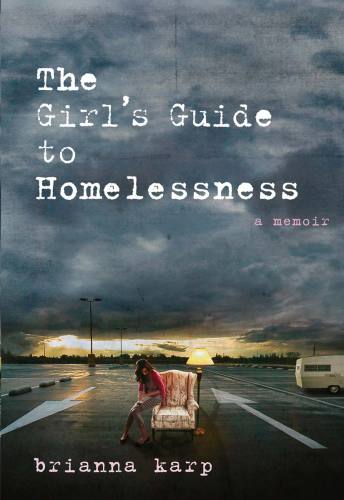
The Girl's Guide to Homelessness
کتاب های مرتبط
- اطلاعات
- نقد و بررسی
- دیدگاه کاربران
نقد و بررسی

March 14, 2011
In this candid and wickedly humorous memoir, Karp recounts her struggles of going from having a steady job to living in a trailer in a Southern California Wal-Mart parking lot in a matter of days. Raised in a Jehovah's Witness household, Karp endured sexual abuse from her father (who later abandoned the family) as well as mental and physical abuse by her mother. Despite this, as well as being forced by her mother to get a job at age 10, she excelled in school and had a well-paying job as an executive assistant when she was 22. But in the wake of the recession, Karp was laid off after TK years, and, unable to pay rent or stay with her mother and stepfather, had to live in a 30-foot trailer she'd recently inherited. Taking advantage of Wal-Mart's policy of allowing RVs and trailers to stay in their parking lots overnight, Karp "moved" to a parking lot, spending her days at Starbucks using the Wi-Fi connection to search for jobs. When a friend suggested blogging about her experience, she started www.girlsguidetohomelessness.com and connected with other homeless activists; soon, her story went viral. Karp's voice is instantly appealing, and her message that basic respect shouldn't disappear when you lose your home is a vital one.

Starred review from May 1, 2011
An inspiring memoir of the modern-day homeless person.
After managing to sail past her stormy adolescence, Karp forecasted blue skies ahead. But when the crippling recession hit, the author was laid off in a stroke of bad luck that left her homeless but not "hopeless." As a result, writes the author, she went from being an independent woman to a social outcast in a matter of mere months. She briefly found refuge with her mother and stepfather, but with a dysfunctional family tree rooted in incest, abuse and mental disorder, she swiftly returned to the streets. Karp ultimately found a haven in the 30-foot trailer she inherited after her biological father's suicide. But instead of wallowing, the author turned her hard luck into an opportunity to remove the negative associations from homelessness. Karp's language is direct and sometimes unsophisticated, but it keeps in line with the graphic nature of the text. Faith is no savior here; the author associates her rocky family dynamics with her upbringing as a Jehovah's Witness, often referring to the religion as a cult. Karp's story reverberates with immediacy and honesty, and readers will be more than a little dismayed by the frightening notion that the author's fate could just as easily befall them.
A haunting personal story that gives a face and a name to homelessness.
(COPYRIGHT (2011) KIRKUS REVIEWS/NIELSEN BUSINESS MEDIA, INC. ALL RIGHTS RESERVED.)

May 15, 2011
In her provocative and fascinating memoir, Karp challenges the prevailing stereotypes of homelessness. After spending most of her life supporting her family, Karp is laid off from her office job during the recession, which sets off a chain of events that leaves her living in a trailer in an Orange County Walmart parking lot. In addition to describing how she navigates lifefrom job searching to basic hygieneas a homeless woman, she writes frankly about her sheltered upbringing as a Jehovahs Witness, horrific abuse at the hands of her parents, and her failed relationships, including one with a homeless activist who betrays her. Some passages are difficult to read, both because of their graphic subject matter and because of Karps mordant tone. Karp first chronicled her experiences in a blog of the same title, and its easy to see why readers were transfixed by her account.(Reprinted with permission of Booklist, copyright 2011, American Library Association.)

























دیدگاه کاربران